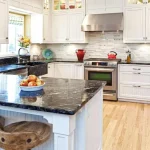When planning a kitchen remodel, incorporating eco-friendly principles can create a space that’s not only beautiful and functional but also sustainable and environmentally responsible.
From choosing the right materials to optimizing energy efficiency, every decision can contribute to a greener kitchen. Here’s a comprehensive guide to planning an eco-friendly kitchen remodel.
Planning Your Eco-Friendly Kitchen Remodel

The first step in planning your eco-friendly kitchen remodel is setting clear goals for sustainability. Do you want to reduce energy consumption, use recycled materials, or improve indoor air quality? Defining your objectives will help guide your decisions throughout the project.
Budgeting is another crucial aspect. While some eco-friendly options might have a higher upfront cost, they often result in long-term savings on energy and water bills. Plan your budget to accommodate these initial investments, keeping in mind the future benefits.
Choosing Sustainable Materials
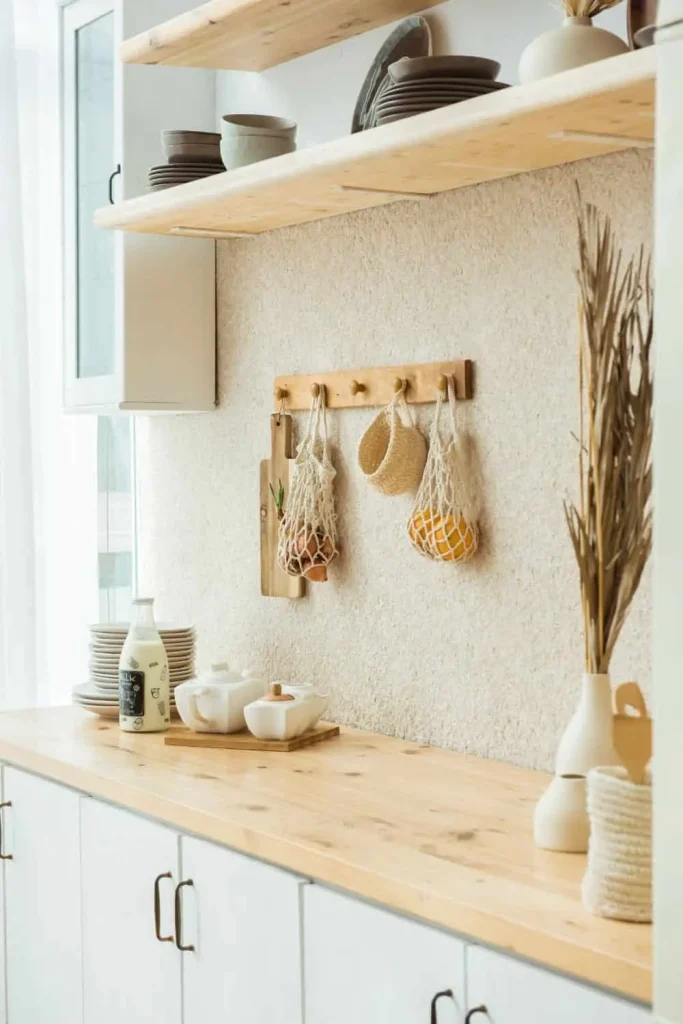
Eco-Friendly Countertops
When selecting countertops, consider materials like recycled glass, bamboo, or reclaimed wood. These options not only look stunning but also minimize environmental impact.
Sustainable Flooring Options
For flooring, bamboo and cork are excellent choices due to their rapid renewability. Additionally, look into reclaimed wood or tiles made from recycled content.
Recycled and Reclaimed Materials
Incorporating recycled and reclaimed materials in your kitchen remodel can give a unique, rustic charm while reducing the demand for new resources. Think reclaimed wood for shelving or recycled metal for accents.
Energy-Efficient Appliances
Choosing Energy-Efficient Appliances
Opt for appliances that have high energy efficiency ratings. Refrigerators, ovens, and dishwashers with the Energy Star label consume less energy and are better for the environment.
The Importance of Energy Star Ratings
Energy Star-rated appliances are designed to use less energy without sacrificing performance. This means lower utility bills and a reduced environmental impact.
Water Conservation
Installing Low-Flow Faucets and Fixtures
Low-flow faucets and fixtures can significantly reduce water usage. Look for WaterSense-labeled products to ensure efficiency without compromising functionality.
Water-Efficient Dishwashers
Modern dishwashers are designed to use less water and energy. Choose models that adjust water usage based on the load, ensuring optimal efficiency.
Lighting Solutions
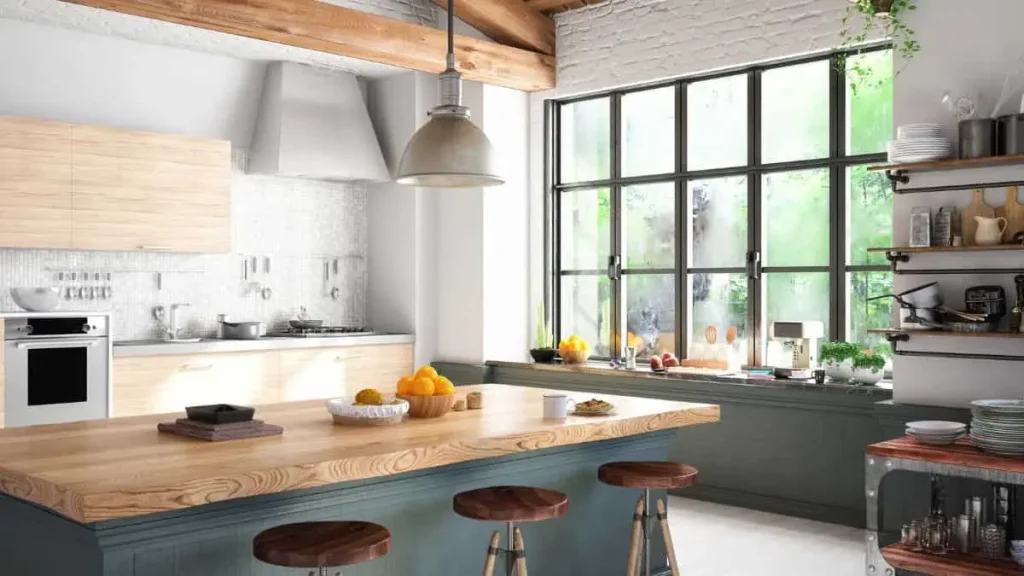
Using LED Lighting
LED bulbs use up to 80% less energy than traditional incandescent bulbs and last much longer. Replace old bulbs with LEDs to reduce energy consumption.
Maximizing Natural Light
Maximize the use of natural light in your kitchen design. Large windows, skylights, and glass doors can brighten up your space while reducing the need for artificial lighting.
Recommended: Top 10 Kitchen Lighting Options to Brighten Up Your Space
Waste Reduction
Implementing a Waste Management Plan
Create a plan for managing kitchen waste efficiently. This could include setting up a recycling station and composting organic waste.
Composting Options in the Kitchen
Consider adding a small compost bin in your kitchen for food scraps. Composting not only reduces waste but also produces nutrient-rich soil for your garden.
Eco-Friendly Cabinets and Furniture
Using Non-Toxic Materials
When choosing cabinets and furniture, opt for materials free from harmful chemicals. Look for products labeled as low-VOC (volatile organic compounds) to improve indoor air quality.
Sustainable Furniture Options
Select furniture made from sustainably sourced wood or recycled materials. This helps reduce the demand for new resources and supports eco-friendly manufacturing practices.
Eco-Friendly Paints and Finishes
Low-VOC and Non-Toxic Paints
Paints with low or zero VOCs emit fewer pollutants, making them a healthier choice for your home. Choose these eco-friendly options to reduce indoor air pollution.
Eco-Friendly Finishes for Wood
Use water-based finishes instead of solvent-based ones. They contain fewer harmful chemicals and are better for both your health and the environment.
Green Insulation
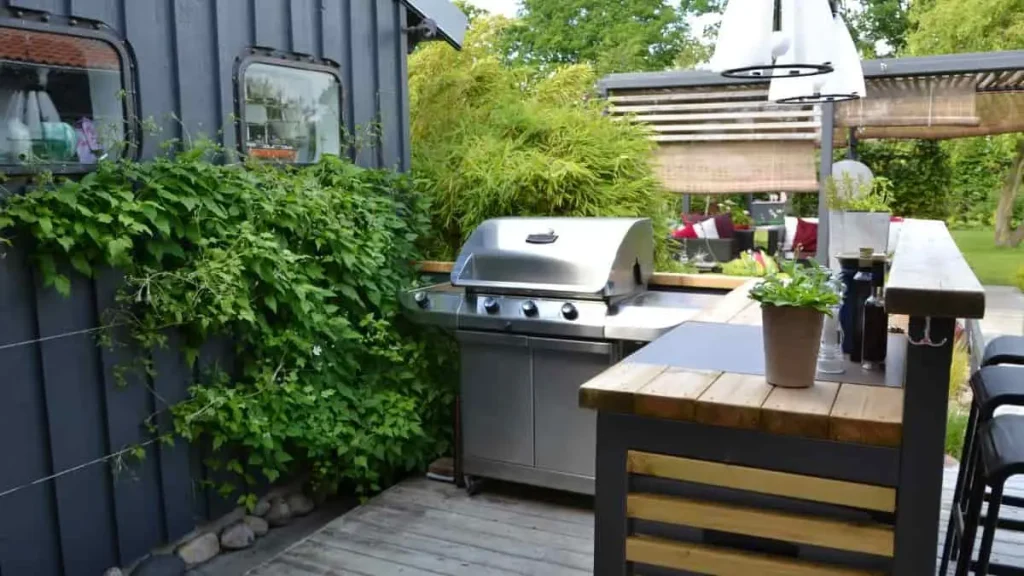
Benefits of Eco-Friendly Insulation
Eco-friendly insulation, such as cellulose or sheep’s wool, provides excellent thermal performance and is made from renewable or recycled materials.
Types of Sustainable Insulation Materials
Consider insulation materials like recycled denim, cork, or straw bales. These options are not only sustainable but also highly effective in maintaining indoor temperatures.
Efficient Ventilation
Importance of Good Ventilation
Proper ventilation is crucial for maintaining indoor air quality. It helps remove cooking fumes, moisture, and other pollutants from your kitchen.
Energy-Efficient Ventilation Systems
Choose energy-efficient range hoods and ventilation systems. These products are designed to provide effective ventilation while using less energy.
Smart Home Technology
Integrating Smart Technology for Energy Efficiency
Smart home technology can help you monitor and reduce energy usage. Smart thermostats, lighting controls, and appliances can be programmed to operate more efficiently.
Smart Thermostats and Lighting Controls
Install smart thermostats to regulate heating and cooling based on your schedule. Use smart lighting controls to turn off lights automatically when not in use.
DIY vs. Hiring Professionals
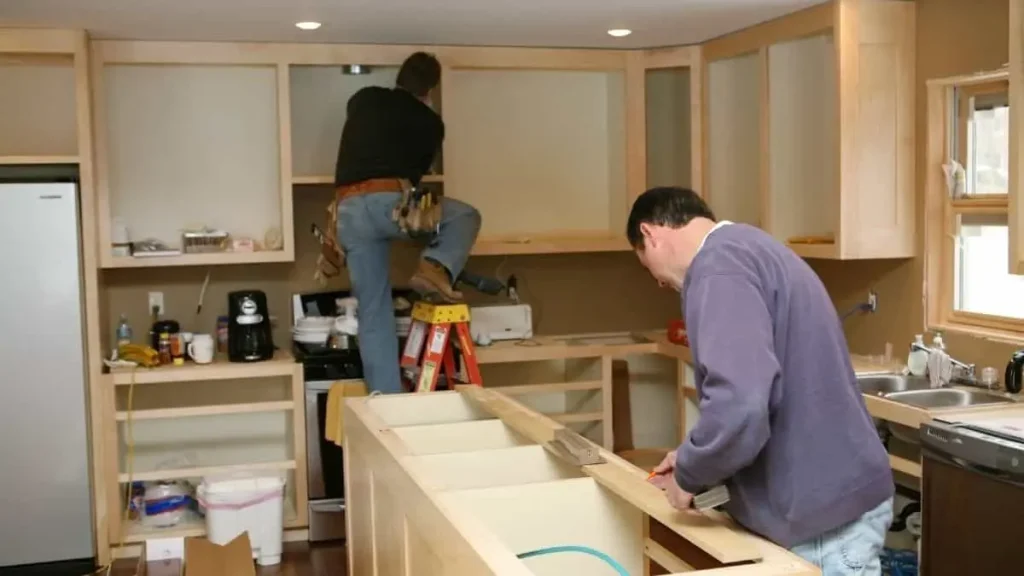
Pros and Cons of DIY Remodeling
Taking on a kitchen remodel yourself can save money, but it requires time, skill, and dedication. Consider your capabilities before deciding to DIY.
Selecting Eco-Conscious Contractors
If you choose to hire professionals, look for contractors experienced in eco-friendly remodeling. They can provide valuable advice and ensure your project meets sustainability standards.
Maintaining Your Eco-Friendly Kitchen

Tips for Keeping Your Kitchen Sustainable
Regularly clean and maintain your appliances to ensure they operate efficiently. Replace filters, check for leaks, and keep an eye on energy and water usage.
Regular Maintenance and Check-Ups
Schedule periodic check-ups for your kitchen systems. Regular maintenance helps identify and fix issues early, maintaining the efficiency and eco-friendliness of your kitchen.
FAQs
What is the most eco-friendly countertop material?
Recycled glass, bamboo, and reclaimed wood are some of the most eco-friendly countertop materials available. They offer durability and a unique aesthetic while minimizing environmental impact.
How can I reduce water usage in my kitchen?
Install low-flow faucets and fixtures, choose water-efficient dishwashers, and be mindful of water usage while cooking and cleaning to reduce water consumption in your kitchen.
Are energy-efficient appliances worth the investment?
Yes, energy-efficient appliances may have a higher upfront cost, but they can significantly lower your energy bills and reduce your carbon footprint in the long run.
What are some tips for reducing waste in the kitchen?
Set up a recycling station, compost organic waste, and be mindful of packaging when purchasing groceries. Using reusable containers and bags can also help reduce waste.
How can I find eco-friendly kitchen remodeling contractors?
Look for contractors with experience in eco-friendly remodeling. Check their references, read reviews, and ask about their sustainability practices to ensure they align with your goals.
Conclusion
Remodeling your kitchen with eco-friendly practices is a smart investment for your home and the planet. By choosing sustainable materials, energy-efficient appliances, and water-saving fixtures, you can create a beautiful, functional kitchen that aligns with your environmental values. Start planning your eco-friendly kitchen remodel today and enjoy the benefits of a greener, healthier home.



